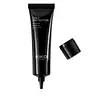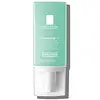KIKO Milano Daily Protection Bb Cream SPF 30 Versus La Roche-Posay Hydraphase HA Light Hyaluronic Acid Face Moisturizer
What's inside
What's inside
 Key Ingredients
Key Ingredients

 Benefits
Benefits

 Concerns
Concerns

 Ingredients Side-by-side
Ingredients Side-by-side

Water
Skin ConditioningEthylhexyl Methoxycinnamate
UV AbsorberTalc
AbrasiveDimethicone
EmollientEthylhexyl Salicylate
UV AbsorberCetyl PEG/PPG-10/1 Dimethicone
EmulsifyingTitanium Dioxide
Cosmetic ColorantC12-15 Alkyl Benzoate
AntimicrobialIsododecane
EmollientGlycerin
HumectantCaprylic/Capric Triglyceride
MaskingTriethylhexanoin
MaskingPhenoxyethanol
PreservativeSodium Chloride
MaskingMagnesium Sulfate
Diethylhexyl Syringylidenemalonate
Skin ProtectingSilica
AbrasivePotassium Sorbate
PreservativeSodium Dehydroacetate
PreservativeHydrogen Dimethicone
Disteardimonium Hectorite
StabilisingParfum
MaskingTriethoxycaprylylsilane
Benzoic Acid
MaskingAluminum Hydroxide
EmollientDehydroacetic Acid
PreservativePropylene Carbonate
SolventCrambe Maritima Leaf Extract
Skin ConditioningEthylhexylglycerin
Skin ConditioningBHT
AntioxidantCI 77891
Cosmetic ColorantCI 77492
Cosmetic ColorantWater, Ethylhexyl Methoxycinnamate, Talc, Dimethicone, Ethylhexyl Salicylate, Cetyl PEG/PPG-10/1 Dimethicone, Titanium Dioxide, C12-15 Alkyl Benzoate, Isododecane, Glycerin, Caprylic/Capric Triglyceride, Triethylhexanoin, Phenoxyethanol, Sodium Chloride, Magnesium Sulfate, Diethylhexyl Syringylidenemalonate, Silica, Potassium Sorbate, Sodium Dehydroacetate, Hydrogen Dimethicone, Disteardimonium Hectorite, Parfum, Triethoxycaprylylsilane, Benzoic Acid, Aluminum Hydroxide, Dehydroacetic Acid, Propylene Carbonate, Crambe Maritima Leaf Extract, Ethylhexylglycerin, BHT, CI 77891, CI 77492
Water
Skin ConditioningGlycerin
HumectantCaprylic/Capric Triglyceride
MaskingLauroyl Lysine
Skin ConditioningC15-19 Alkane
SolventMyristyl Myristate
EmollientAmmonium Polyacryloyldimethyl Taurate
Emulsion StabilisingStearic Acid
CleansingPotassium Cetyl Phosphate
EmulsifyingGlyceryl Stearate Se
EmulsifyingSodium Hyaluronate
HumectantSodium Hydroxide
BufferingMyristic Acid
CleansingPalmitic Acid
EmollientHydrolyzed Hyaluronic Acid
HumectantCapryloyl Glycine
CleansingCaprylyl Glycol
EmollientXanthan Gum
EmulsifyingPentaerythrityl Tetra-Di-T-Butyl Hydroxyhydrocinnamate
AntioxidantParfum
MaskingWater, Glycerin, Caprylic/Capric Triglyceride, Lauroyl Lysine, C15-19 Alkane, Myristyl Myristate, Ammonium Polyacryloyldimethyl Taurate, Stearic Acid, Potassium Cetyl Phosphate, Glyceryl Stearate Se, Sodium Hyaluronate, Sodium Hydroxide, Myristic Acid, Palmitic Acid, Hydrolyzed Hyaluronic Acid, Capryloyl Glycine, Caprylyl Glycol, Xanthan Gum, Pentaerythrityl Tetra-Di-T-Butyl Hydroxyhydrocinnamate, Parfum
 Reviews
Reviews

Ingredients Explained
These ingredients are found in both products.
Ingredients higher up in an ingredient list are typically present in a larger amount.
This ingredient is an emollient, solvent, and texture enhancer. It is considered a skin-softener by helping the skin prevent moisture loss.
It helps thicken a product's formula and makes it easier to spread by dissolving clumping compounds.
Caprylic Triglyceride is made by combining glycerin with coconut oil, forming a clear liquid.
While there is an assumption Caprylic Triglyceride can clog pores due to it being derived from coconut oil, there is no research supporting this.
Learn more about Caprylic/Capric TriglycerideGlycerin is already naturally found in your skin. It helps moisturize and protect your skin.
A study from 2016 found glycerin to be more effective as a humectant than AHAs and hyaluronic acid.
As a humectant, it helps the skin stay hydrated by pulling moisture to your skin. The low molecular weight of glycerin allows it to pull moisture into the deeper layers of your skin.
Hydrated skin improves your skin barrier; Your skin barrier helps protect against irritants and bacteria.
Glycerin has also been found to have antimicrobial and antiviral properties. Due to these properties, glycerin is often used in wound and burn treatments.
In cosmetics, glycerin is usually derived from plants such as soybean or palm. However, it can also be sourced from animals, such as tallow or animal fat.
This ingredient is organic, colorless, odorless, and non-toxic.
Glycerin is the name for this ingredient in American English. British English uses Glycerol/Glycerine.
Learn more about GlycerinParfum is a catch-all term for an ingredient or more that is used to give a scent to products.
Also called "fragrance", this ingredient can be a blend of hundreds of chemicals or plant oils. This means every product with "fragrance" or "parfum" in the ingredients list is a different mixture.
For instance, Habanolide is a proprietary trade name for a specific aroma chemical. When used as a fragrance ingredient in cosmetics, most aroma chemicals fall under the broad labeling category of “FRAGRANCE” or “PARFUM” according to EU and US regulations.
The term 'parfum' or 'fragrance' is not regulated in many countries. In many cases, it is up to the brand to define this term.
For instance, many brands choose to label themselves as "fragrance-free" because they are not using synthetic fragrances. However, their products may still contain ingredients such as essential oils that are considered a fragrance by INCI standards.
One example is Calendula flower extract. Calendula is an essential oil that still imparts a scent or 'fragrance'.
Depending on the blend, the ingredients in the mixture can cause allergies and sensitivities on the skin. Some ingredients that are known EU allergens include linalool and citronellol.
Parfum can also be used to mask or cover an unpleasant scent.
The bottom line is: not all fragrances/parfum/ingredients are created equally. If you are worried about fragrances, we recommend taking a closer look at an ingredient. And of course, we always recommend speaking with a professional.
Learn more about ParfumWater. It's the most common cosmetic ingredient of all. You'll usually see it at the top of ingredient lists, meaning that it makes up the largest part of the product.
So why is it so popular? Water most often acts as a solvent - this means that it helps dissolve other ingredients into the formulation.
You'll also recognize water as that liquid we all need to stay alive. If you see this, drink a glass of water. Stay hydrated!
Learn more about Water